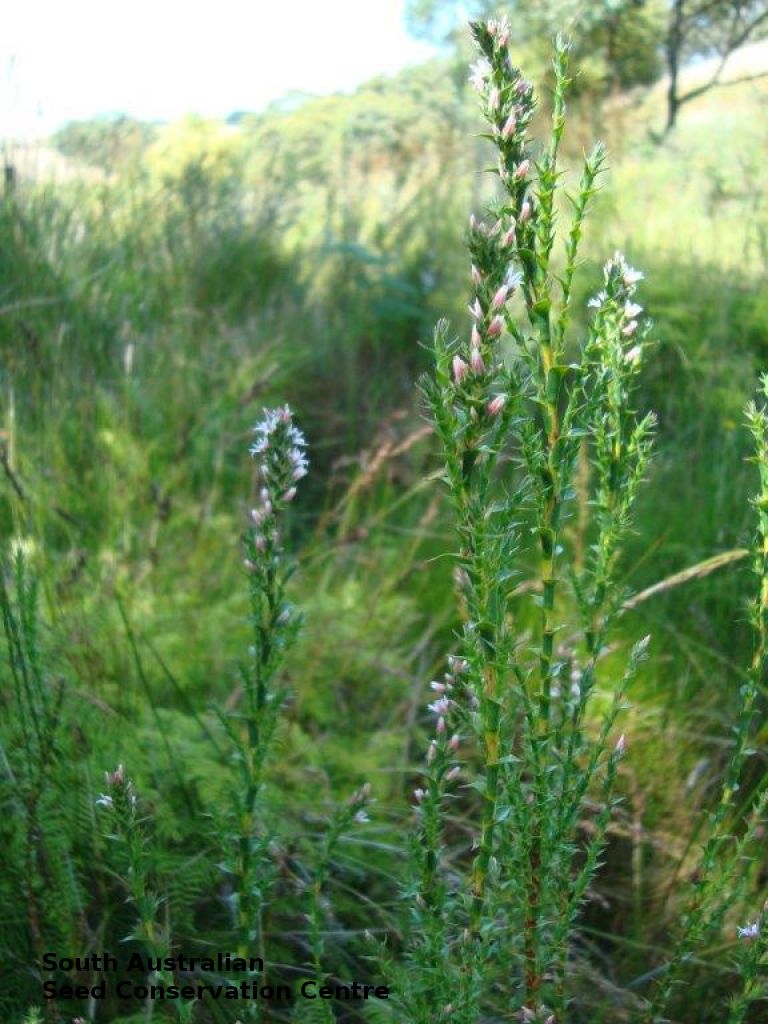
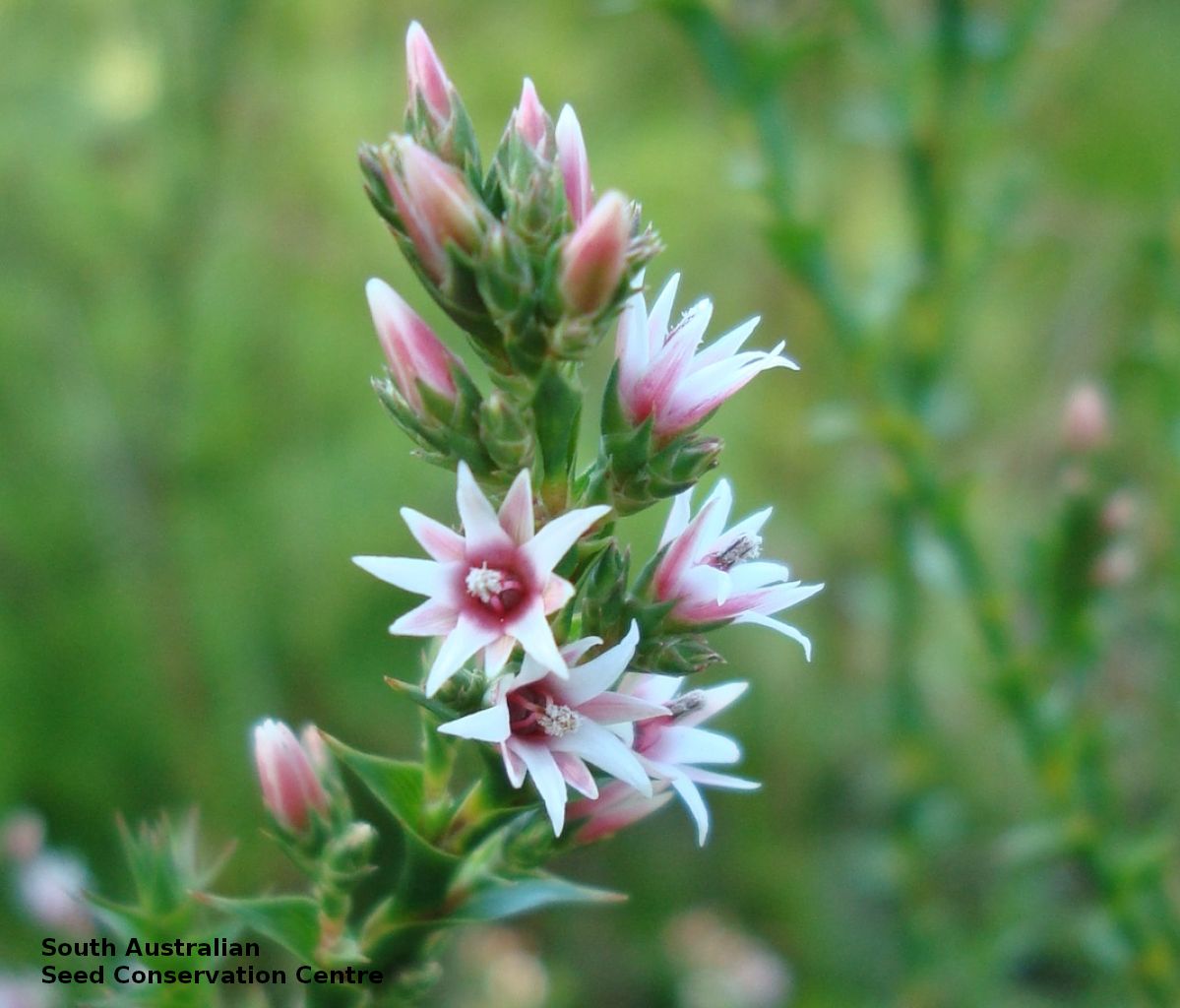
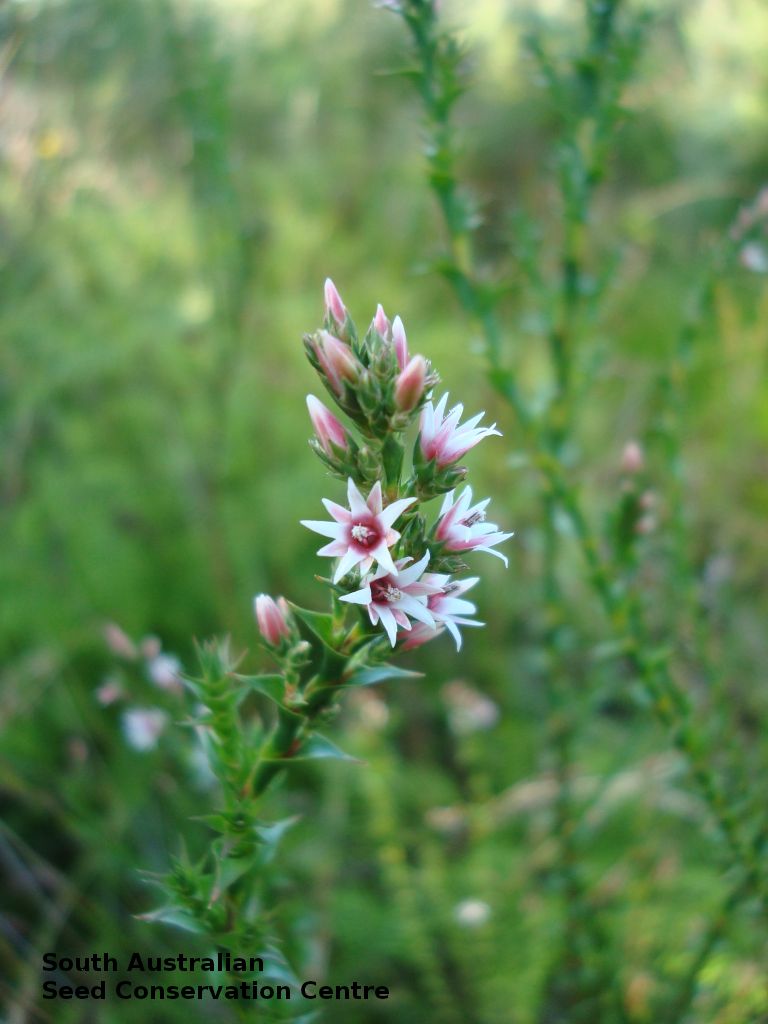
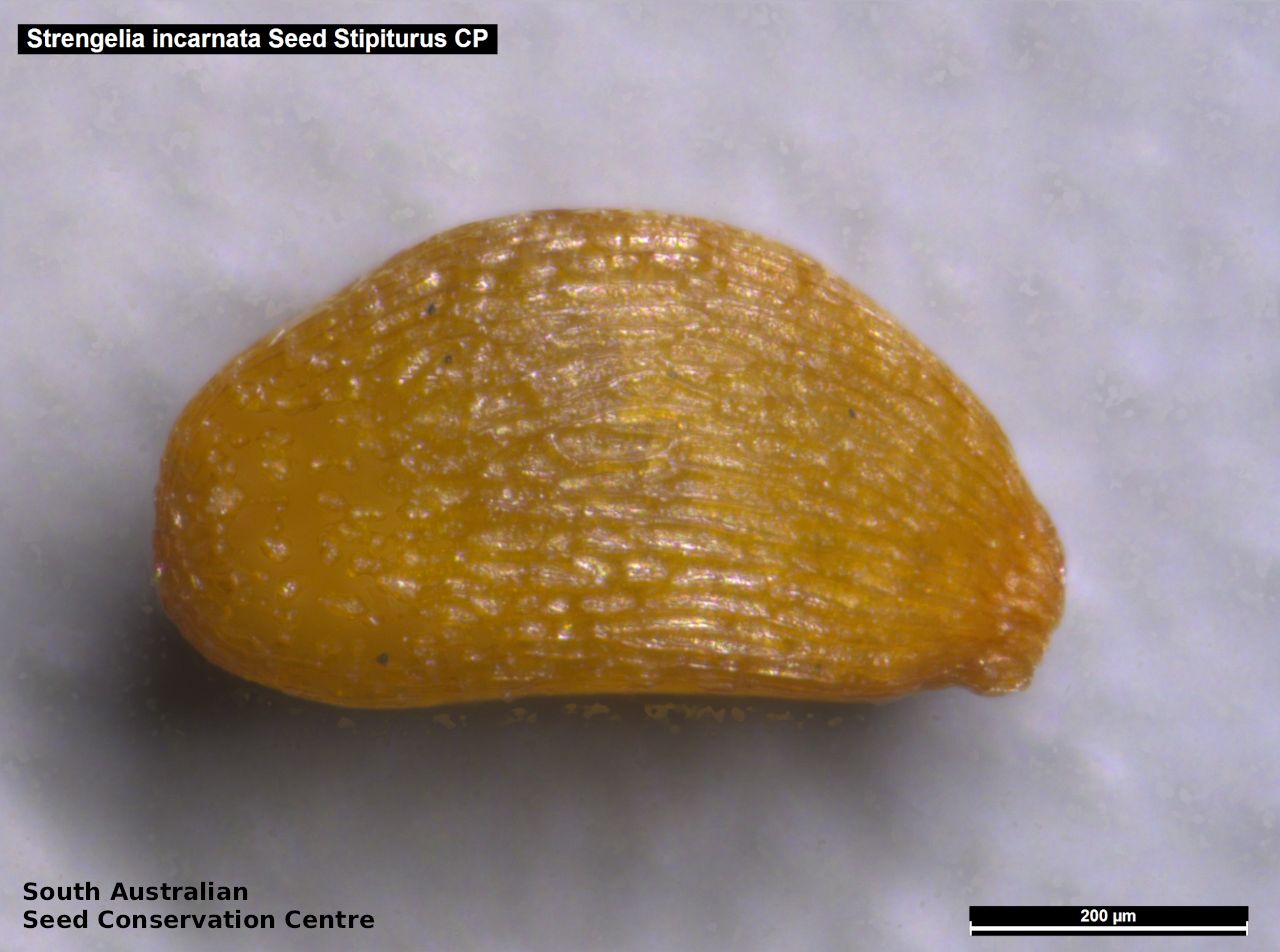
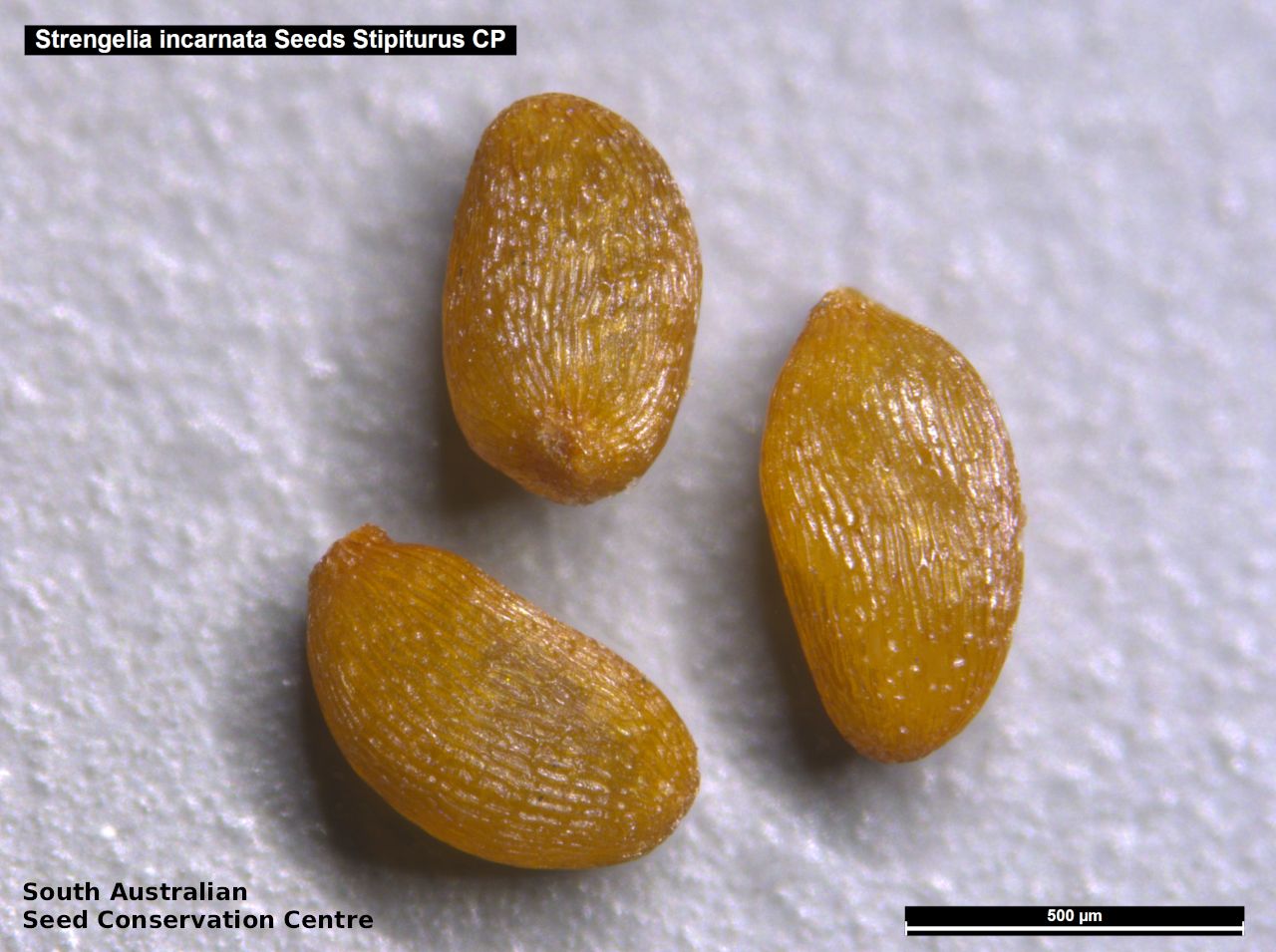

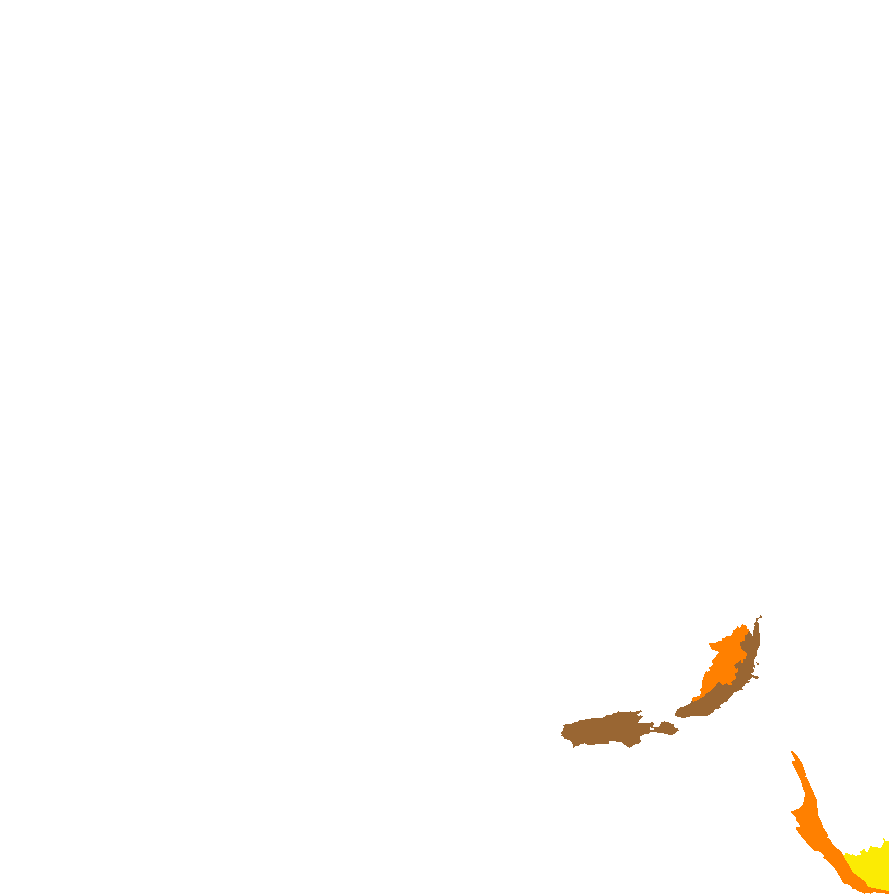
Botanical art
Etymology
Sprengelia named after Kurt Polycarp Joachim Sprengel (1766-1833), a German botanist and physician. Incarnata from the Latin 'carn' meaning flesh and 'atus' meaning like, alluding to the hue of the flowers, sometimes like flesh.
Distribution and status
Found on Kangaroo Island, southern Mount Lofty Ranges and the lower South-east in South Australia, growing in wet heathland, sedgeland and other swampy vegetation on peaty or sandy soils. Also found in New South Wales, Victoria and Tasmania. Rare in South Australia. Common in the other States.
Herbarium regions: Southern Lofty, Kangaroo Island, South Eastern, Green Adelaide
NRM regions: Adelaide and Mount Lofty Ranges, Kangaroo Island, South East
AVH map: SA distribution map (external link)
Plant description
Erect shrub to 2 m high. Leaves spreading above sheathing base; ovate to lanceolate, to 20 mm long and 6 mm wide; concave, with apex tapering to a point. Inflorescence with pinkish-white flowers crowded in the upper 1–8 cm of the stems. Flowering between June and December. Fruits are brown capsule to 2.5 mm long and 1.8 mm wide. Seeds are orange ovoid seed to 0.7 mm long and 0.4 mm wide, with wrinkled surface. Seed embryo type is linear under-developed.
Seed collection and propagation
Collect seeds between November and January. Collect mature capsules, those that are turning a pale straw-coloured and contain orange seeds. Monitoring of ripening capsules maybe required as capsules can split and quickly release the seeds. Place the capsules in a tray and leave to dry for one to two weeks. Then rub the capsules gently by hand to dislodge the seeds. Use a sieve to separate the unwanted material. Be very careful as the seeds are very small. Store the seeds with a desiccant such as dried silica beads or dry rice, in an air tight container in a cool and dry place. Seeds have morpho-physiological dormancy and will not germinate readily without treatment. Germination is enhanced by treating with fire cues, heat and smoke water, and gibberellic acid.
| Location | No. of seeds (weight grams) | Number of plants | Date collected | Collection number Collection location | Date stored | % Viability | Storage temperature |
|---|---|---|---|---|---|---|---|
| MSB | 2,700 (0.34 g) | 50-60 | 4-May-2006 | DJD476 Kangaroo Island | |||
| BGA | 4,400 (0.34 g) | 27-Nov-2014 | Stipituris CP Southern Lofty | 1-Jan-2016 | 80% | -18°C, -80°C |
Number of plants: This is the number of plants from which the seeds were collected.
Collection location: The Herbarium of South Australia's region name.
% Viability: Percentage of filled healthy seeds determined by a cut test or x-ray.